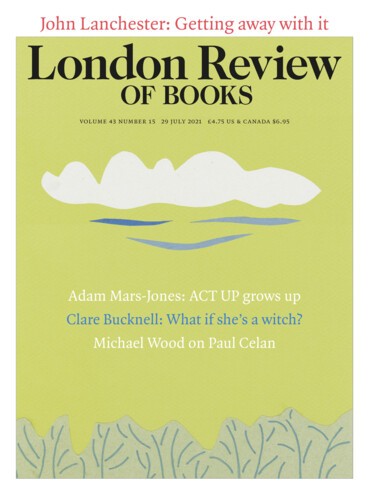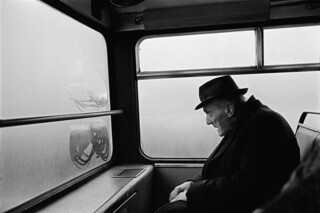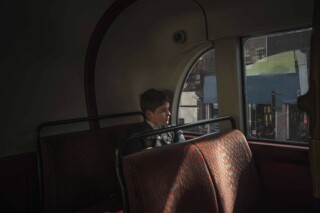On London buses, the passengers no longer speak to one another. They speak on their phone, often using a different sort of voice. Most are silent behind their masks. Only the gangs of school kids offer hope for the vitality of the language: they don’t muck about, patter-wise, and they don’t spare your blushes, curse-wise. Harold Pinter once warned that writers have a tendency to lose something when they stop taking the bus and begin taking taxis. What they lose is the habit of listening to what the people around them are saying. And buses, bus routes, comings and goings, stand in for something else too. They help us to map our relation to other people, to know something about who they are by where they go. This comes up in The Caretaker: ‘All the buses passed right by the door. She could get a 38, 581, 30 or a 38A, take her down the Essex Road to Dalston Junction in next to no time. Well, of course, if she got the 30 he’d take her up Upper Street way, round by Highbury Corner and down to St Paul’s Church, but she’d get to Dalston Junction just the same in the end.’
Of the artistes, as my granny used to call them, it’s photographers, not writers, who should claim the bus, a lightbox on wheels that rumbles through shadows with people sitting still, framed for portraits. Not long ago, I bought a print by the photographer Sarah Lee. It shows a boy on a London bus, the 88, I think, which passes through Camden Town, where Lee lives. She is a veteran of North London bus stops, often catching people slumped against the window on night buses or glimpsed for a second as they stare out at the rain. Tony O’Shea’s new book of photographs, The Light of Day (RRB Photobooks, £30), most of them from the 1990s, takes an interest in public places in Ireland – the Turkey Market in Dublin, a cemetery in Belfast, but also traffic lights and buses. There are boys here, too, but not a mobile phone in sight. This one (above) was taken on the top deck of a Dublin bus in 1984. In a world of condensation, the elderly gent has rubbed a few holes in the window and is staring out at God knows what, the road ahead, presumably, though we can read in the picture something of the road behind him. O’Shea’s photographs happen ‘when people are about to do something else’, Colm Tóibín writes in the afterword. ‘He composes his image before the image has composed itself.’ That seems to me a different way of thinking about Cartier-Bresson’s ‘decisive moment’. O’Shea catches the uncertain moment, when the thing that might happen hasn’t yet, or already did.
Send Letters To:
The Editor
London Review of Books,
28 Little Russell Street
London, WC1A 2HN
letters@lrb.co.uk
Please include name, address, and a telephone number.



